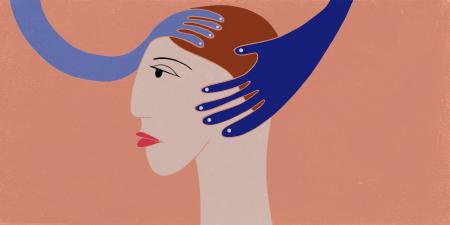Abstract
This article contextualizes and challenges race, class, and gender inequity in psychiatric use of force. In particular, this article examines (1) how uses of force—seclusion, restraint, compulsion—have been codified in policy and law, (2) inequity in force utilization, and (3) connections between systemic oppression and individuals’ responses—including fear and retraumatization—to feeling threatened by force in clinical settings. This article proposes multilevel strategies to abolish inequity in uses of force in clinical settings and questions whether it is ever possible to use force compassionately where inequity persists.
Introduction
Force utilization in US mental health care settings reifies structural inequity and must be abolished. Evidence for this stance includes myriad harms of force1,2,3,4,5 and the experience of individuals living with mental illnesses who, for over a decade, have decried uses of force in carceral, emergency department, and psychiatric settings.6,7,8,9 Force utilization in health care is not only widely documented as a source of harm but also inequitably applied based on race, gender, age, and diagnostic history.9,10,11,12 This article contextualizes uses of force through intergroup threat theory, argues that the possibility for compassionate intention in the use of force is extremely remote amidst pervasive inequity, and suggests how to render force obsolete.
Contextualizing Force
The COVID-19 pandemic has disproportionately affected people with mental illnesses13 and Black people14 and exacerbated extant conditions of police brutality, anti-Black racism, and carceral violence.15,16 Approximately one-third to one-half of all people killed by police have a disability.17 As movements for racial justice build, clinicians in hospital, nursing home, community health, and private psychiatric settings must interrogate how force reifies structural violence and oppression. Force can be applied mechanically, pharmacologically, or legally and implemented by seclusion (ie, isolating a person from staff and patients),18 restraint ie, physically limiting a person’s mobility through manual holds, mechanical tools, or pharmacologic agents),19 and compulsion (ie, involuntarily hospitalizing and treating a person).20
Force is typically utilized to prevent people from harming themselves or others, especially when a person’s decision-making capacity is compromised. It is most frequently used in emergency departments and inpatient psychiatric units to promote safety and should be regarded as a “last resort,” according to the American Psychiatric Association,21 Recovery Innovations’ “no force first” policy,22 and the Joint Commission.23 Yet, in one study of 317 US hospitals, monthly administrative data indicated no change in frequency of force use between 2007-2011 and 2012-2013, although there was a nonsignificant decrease in the average length of episode.24 Reforms in force implementation practices have shown some success.1,25 It remains ethically important, however, to imagine health care without force practices at all.
Reformers argue that force might be needed in extraordinary circumstances, such as when patients decompensate to a point at which they threaten their own or others’ safety. Similarly, those calling for compassionate use of force argue that force practices can be ethically implemented when collaboratively considered, prior to need for their implementation. Indeed, individuals with recurrent conditions can request that force be used (ie, if and when their condition worsens to the point at which they lack insight or capacity) by psychiatric advance care planning, sometimes documented as “Ulysses contracts.”26,27,28
Force Equity?
Whether force can be compassionate is controversial. Mental Health America (ie, position statements 22 and 24)29,30 and the American Psychiatric Nurses Association31 decry its use outright. Abolition of force is perhaps most easily justifiable in terms of its inequitable implementation. Across critical incident studies, quality surveys, and meta-analyses, seclusion and restraint are widely documented as inequitably administered to men3 or to people who are Black, unemployed, or homeless or who have been previously hospitalized and had longer hospital stays.24,32 Among women, Black women and those with prior interactions with police are more likely to experience involuntary interventions.33 These patterns persist in children’s inpatient psychiatry settings, where younger age and Black race are associated with seclusion,34 and in emergency departments, where Black patients are more likely than White patients to be restrained.10 We acknowledge that staff and patients must be kept safe, but we must also acknowledge that the pervasiveness of anti-Black racism means our Black patients are more likely to be subject to force and its iatrogenic harms. Indeed, the American Psychiatric Association in January 2021 issued an “Apology to Black, Indigenous and People of Color” for supporting structural racism in psychiatry.35 Although it did not mention force per se, the statement decries “abusive treatment” as well as racial inequities in clinical treatment.
Violence begets violence, exacerbating historically entrenched oppression in clinical settings that recurs at micro, meso, and macro levels.
Intergroup threat theory can help us understand how inequitable application of force transpires in health care settings. Intergroup threat theory suggests that members of certain groups perceive members of other groups as threats simply due to their group membership and the ways we are socialized to fear the “other.” The perception of threat contributes to disparate force utilization, especially among people who have experienced racism. In hostile or violent interactions, people can respond to feeling threatened by expressing negative attitudes, biases, verbal and nonverbal behaviors, and aggression36 and with “fight, flight, or freeze” responses.37 Clinicians, even clinicians of color, who have internalized White supremacy can express pro-White biases in their responses to Black patients, whom they view as threatening, and can engage “fight” responses that include implementing force. Of course, patients also respond to feeling threatened. People who have experienced negative bias or even covertly racist incidents can experience trauma.38 Accordingly, when people feel harmed within a hostile, restrictive environment dictated by punishment and control, they can respond behaviorally and in ways that can be perceived by others as threatening. Violence begets violence,39 exacerbating historically entrenched oppression in clinical settings that recurs at micro, meso, and macro levels.40 At the micro (personal) level, inequity can manifest in clinician bias41,42 and be expressed in elevated rates of psychiatric diagnoses among people of color43,44,45 and clinicians’ negative feelings toward people of color who are or are perceived as aggressive.46 At the meso (community) level, inequity can manifest in health care organizations’ force protocols’ neglect of how aggression and anger might be reasonable responses to experiences of systemic oppression or a specific threat of harm.47,48 And, at the macro (social, cultural) level, inequity manifests in greater police brutality against people with disabilities and people of color.49
Where Inequity Persists, Abolition
Calls for abolition of force in mental health care are not new. In the mid-1800s, proponents of “moral treatment” for psychiatric patients advocated for the end of force, particularly restraint.31 In the 21st century, clinicians began to argue that restraint use was not evidence based and was counter-therapeutic.1 Multidisciplinary, global efforts to prevent force utilization with aggressive patients continue, and one study assessing responses to patient violence in psychiatric settings across the European Union prioritized reducing force.50 The World Health Organization also argues that seclusion and restraint are neither evidence based nor therapeutic and calls for regulatory changes and abolition of these practices.47
As psychologists and health services researchers who have studied, been complicit in, and resisted using force to treat patients, we recognize the complexity in rendering seclusion, restraint, and compulsion obsolete. We acknowledge important work being done to reform these force practices, which call for equitable, compassionate force implementation. The New York State Office of Mental Health (NYSOMH), for example, requires that force (a) can only be utilized as a last resort to prevent injury, (b) can only be valid for 2 hours by a physician’s order, (c) cannot be used as punishment, (d) must include regular vital monitoring procedures, (e) must not be used excessively, and (f) must be followed by a debrief on how to prevent future uses of force.51 Notably absent from the NYSOMH website, however, are guidelines for mitigating inequity or creating a path toward rendering force obsolete.52 Two facts are undeniable: (1) force is utilized disproportionately on men, Black people, unemployed people, and homeless people and disproportionately harms Black men3,10,24,32,33,34; and (2) multiple advocacy groups decry the use of force.6,7,8,29,30,31,53,54 Thus, we argue for the immediate end to seclusion, restraint, and compulsion.
Because some people with mental illnesses might harm themselves or others, we acknowledge that there are cases in which not using force might be considered neglect or abuse. Although we recognize the merits of this perspective, we call for consideration of feminist accounts of oppression that attribute the poorer psychiatric outcomes of some patients to their lack of power and agency.55 Feminist psychiatric ethical and clinical approaches suggest that restoring power and agency to patients is a key mechanism of therapeutic action that mitigates the need for seclusion, restraints, or compulsion and that can help end what have been called “aggression-coercion cycles.”56
There are several ways clinicians, staff, and organizations can mitigate and seek to eliminate inequity in force implementation, with the primary goal of abolishing seclusion, restraint, and compulsion in health care settings.
- Commit to anti-racist practice. Interrogate internalized racism,57 deconstruct White privilege,58 and practice decolonization59 to uproot conditions that necessitate the use of force.
- Draw on intergroup threat theory to discern, mitigate, and de-escalate racialized responses to feeling threatened.
- Be accountable in relationships and create space for reflection and analysis to shift the sociocultural dynamics in health care settings. Provide trauma-informed care to patients.60 Provide time and space for clinicians to reflect on and be accountable for racist beliefs and to center the resilience of people of color.56
- Promote health care organizational change. Implement alternatives to the use of force, do not invite police or security personnel to patient care settings, de-escalate conflict,61 and focus on restorative justice after conflict.62 Collect data about force utilization inequity. Hire clinicians who represent patient populations.
- Partner with mental health community and advocacy groups. For example, through MAD PRIDE,51 Fireweed Collective,52 and the Hearing Voices Network63 learn about the call to demedicalize diversity in mental illness experiences. Support interventions that reduce the need for involuntary admission.52,64 Join extant movements for institutional accountability.
- Promote abolition of force where inequity persists. In line with a statement from Mental Health America,30 work to identify and uproot conditions contributing to inequity.
Conclusion
As health care professionals, it is critical that we identify the root causes of inequity in force use in clinical settings. Some professionals in health care and in law enforcement use the language of compassion to justify using force in their practices, so we must be wary of when compassionate intention actually manifests as racism, violence, and dehumanization. It is our duty to strive to share power, promote liberation, question impulses to control, and render force use on anyone obsolete.
References
-
Chieze M, Hurst S, Kaiser S, Sentissi O. Effects of seclusion and restraint in adult psychiatry: a systematic review. Front Psychiatry. 2019;10:491.
- Laku IM, Winarni I, Windarwati HD. The effects of restraint and seclusion on patients with mental disorder: a systematic review. Int J Sci Soc. 2020;2(2):150-167.
- Al-Maraira OA, Hayajneh FA. Use of restraint and seclusion in psychiatric settings: a literature review. J Psychosoc Nurs Ment Health Serv. 2019;57(4):32-39.
- Shaw G. Special report: balancing restraint and safety in the ED. Emerg Med News. 2020;42(10):12-13.
- Masters KJ, Huckshorn KA. The role of the psychiatrist in seclusion and restraint. Psychiatr Serv. 2020;71(5):511-513.
-
Nussbaum AM, Wynia MK. “When they restrain you they ignore you”—what we should learn from the people we restrain in emergency departments. JAMA Netw Open. 2020;3(1):e1919582.
- Spinzy Y, Maree S, Segev A, Cohen-Rappaport G. Listening to the patient perspective: psychiatric inpatients’ attitudes towards physical restraint. Psychiatr Q. 2018;89(3):691-696.
- Holmes D, Kennedy SL, Perron A. The mentally ill and social exclusion: a critical examination of the use of seclusion from the patient’s perspective. Issues Ment Health Nurs. 2004;25(6):559-578.
-
Wong AH, Ray JM, Rosenberg A, et al. Experiences of individuals who were physically restrained in the emergency department. JAMA Netw Open. 2020;3(1):e1919381.
- Schnitzer K, Merideth F, Macias-Konstantopoulos W, Hayden D, Shtasel D, Bird S. Disparities in care: the role of race on the utilization of physical restraints in the emergency setting. Acad Emerg Med. 2020;27(10):943-950.
- Bloch S, Green SA. An ethical framework for psychiatry. Br J Psychiatry. 2006;188(1):7-12.
- Johnston MS, Kilty JM. “It’s for their own good”: techniques of neutralization and security guard violence against psychiatric patients. Punishm Soc. 2016;18(2):177-197.
- Dorn AV, Cooney RE, Sabin ML. COVID-19 exacerbating inequalities in the US. Lancet. 2020;395(10232):1243-1244.
- Laurencin CT, McClinton A. The COVID-19 pandemic: a call to action to identify and address racial and ethnic disparities. J Racial Ethn Health Disparities. 2020;7(3):398-402.
- Rickford R. Black Lives Matter: toward a modern practice of mass struggle. New Labor Forum. 2016;25(1):34-42.
-
Lai KKR, Marsh B, Singhvi A. Here are the 100 US cities where protesters were tear-gassed. New York Times. June 16, 2020. Accessed June 19, 2020. https://www.nytimes.com/interactive/2020/06/16/us/george-floyd-protests-police-tear-gas.html
-
Perry DM, Carter-Long L. The Ruderman white paper on media coverage of law enforcement use of force and disability: a media study (2013-2015) and overview. Ruderman Family Foundation. March 2016. Accessed June 26, 2020. https://rudermanfoundation.org/wp-content/uploads/2017/08/MediaStudy-PoliceDisability_final-final.pdf
- Huckshorn KA. Reducing seclusion and restraint use in inpatient settings: a phenomenological study of state psychiatric hospital leader and staff experiences. J Psychosoc Nurs Ment Health Serv. 2014;52(11):40-47.
- Kinner SA, Harvey C, Hamilton B, et al. Attitudes towards seclusion and restraint in mental health settings: findings from a large, community-based survey of consumers, carers and mental health professionals. Epidemiol Psychiatr Sci. 2017;26(5):535-544.
-
Knutzen M, Bjørkly S, Eidhammer G, et al. Mechanical and pharmacological restraints in acute psychiatric wards—why and how are they used? Psychiatry Res. 2013;209(1):91-97.
-
Task Force on the Psychiatric Uses of Seclusion and Restraint. Seclusion and restraint: the psychiatric uses: report of the American Psychiatric Association Task Force on the Psychiatric Uses of Seclusion and Restraint. American Psychiatric Association; 1985. Accessed February 19, 2021. https://www.psychiatry.org/File%20Library/Psychiatrists/Directories/Library-and-Archive/task-force-reports/tfr1984_SeclusionRestraint.pdf
- Ashcraft L, Bloss M, Anthony WA. Best practices: the development and implementation of “no force first” as a best practice. Psychiatr Serv. 2012;63(5):415-417.
-
Joint Commission. Standards on restraint and seclusion/Nonviolent Crisis Intervention® Training Program. Crisis Prevention Institute; 2009. https://www.crisisprevention.com/CPI/media/Media/Resources/alignments/Joint-Commission-Restraint-Seclusion-Alignment-2011.pdf
- Staggs VS. Trends in use of seclusion and restraint in response to injurious assault in psychiatric units in US hospitals, 2007-2013. Psychiatr Serv. 2015;66(12):1369-1372.
- Cusack P, Cusack FP, McAndrew S, McKeown M, Duxbury J. An integrative review exploring the physical and psychological harm inherent in using restraint in mental health inpatient settings. Int J Ment Health Nurs. 2018;27(3):1162-1176.
- Murray H, Wortzel HS. Psychiatric advance directives: origins, benefits, challenges, and future directions. J Psychiatr Pract. 2019;25(4):303-307.
- Srebnik DS, La Fond JQ. Advance directives for mental health treatment. Psychiatr Serv. 1999;50(7):919-925.
-
Swanson JW, Tepper MC, Backlar P, Swartz MS. Psychiatric advance directives: an alternative to coercive treatment? Psychiatry. 2000;63(2):160-172.
-
Mental Health America. Position Statement 22: involuntary mental health treatment. Accessed June 23, 2020. https://www.mhanational.org/issues/position-statement-22-involuntary-mental-health-treatment
-
Mental Health America. Position Statement 24: seclusion and restraints. Accessed June 19, 2020. https://www.mhanational.org/issues/position-statement-24-seclusion-and-restraints
-
American Psychiatric Nurses Association. APNA position statement on the use of seclusion and restraint. 2000. Revised 2018. Accessed February 19, 2021. https://www.apna.org/m/pages.cfm?pageID=3728
- Chavulak J, Petrakis M. Who experiences seclusion? An examination of demographics and duration in a public acute inpatient mental health service. Soc Work Health Care. 2017;56(6):524-540.
- Lawlor C, Johnson S, Cole L, Howard LM. Ethnic variations in pathways to acute care and compulsory detention for women experiencing a mental health crisis. Int J Soc Psychiatry. 2012;58(1):3-15.
- Vidal C, Reynolds EK, Praglowski N, Grados M. Risk factors for seclusion in children and adolescents inpatient psychiatry: the role of demographic characteristics, clinical severity, life experiences and diagnoses. Child Psychiatry Hum Dev. 2020;51(4):648-655.
-
APA’s apology to Black, Indigenous, and people of color for its support of structural racism in psychiatry. American Psychiatric Association. January 18, 2021. Accessed February 19, 2021. https://www.psychiatry.org/newsroom/apa-apology-for-its-support-of-structural-racism-in-psychiatry
-
Stephan WG, Stephan CW. Intergroup threat theory. In: Yun KY, ed. The International Encyclopedia of Intercultural Communication. John Wiley & Sons; 2017:1-12.
- Maack DJ, Buchanan E, Young J. Development and psychometric investigation of an inventory to assess fight, flight, and freeze tendencies: the fight, flight, freeze questionnaire. Cogn Behav Ther. 2015;44(2):117-127.
- Bryant-Davis T, Ocampo C. The trauma of racism: implications for counseling, research, and education. Couns Psychol. 2005;33(4):574-578.
- Wright EM, Fagan AA. The cycle of violence in context: exploring the moderating roles of neighborhood disadvantage and cultural norms. Criminology. 2013;51(2):217-249.
-
Bronfenbrenner U. Ecological systems theory. In: Kazdin AE, ed. Encyclopedia of Psychology. Vol 3. American Psychological Association; 2000:129-133.
-
Santoro TN, Santoro JD. Racial bias in the US opioid epidemic: a review of the history of systemic bias and implications for care. Cureus. 2018;10(12):e3733.
-
Brooks KC, Rougas S, George P. When race matters on the wards: talking about racial health disparities and racism in the clinical setting. MedEdPORTAL. 2016;12:10523.
-
Conrad JA. A Black and White history of psychiatry in the United States. J Med Humanit. Published online August 28, 2020.
- Garb HN. Race bias, social class bias, and gender bias in clinical judgment. Clin Psychol Sci Pract. 1997;4(2):99-120.
- Schwartz RC, Blankenship DM. Racial disparities in psychotic disorder diagnosis: a review of empirical literature. World J Psychiatry. 2014;4(4):133-140.
- Correll J, Wittenbrink B, Park B, Judd CM, Goyle A. Dangerous enough: moderating racial bias with contextual threat cues. J Exp Soc Psychol. 2011;47(1):184-189.
-
World Health Organization. Strategies to End Seclusion and Restraint: WHO QualityRights Specialized Training. World Health Organization; 2019. Accessed October 21, 2020. https://apps.who.int/iris/bitstream/handle/10665/329605/9789241516754-eng.pdf
-
Park I, Wang L, Williams DR, Alegría M. “Does anger regulation mediate the discrimination-mental health link among Mexican-origin adolescents? A longitudinal mediation analysis using multilevel modeling”: correction to Park et al. (2016). Dev Psychol. 2017;53(2):352.
- Leese M, Russell S. Mental health, vulnerability and risk in police custody. J Adult Prot. 2017;19(5):274-283.
-
Cowman S, Björkdahl A, Clarke E, Gethin G, Maguire J; European Violence in Psychiatry Research Group (EViPRG). A descriptive survey study of violence management and priorities among psychiatric staff in mental health services, across seventeen European countries. BMC Health Serv Res. 2017;17:59.
-
New York State. Rights of inpatients in New York State Office of Mental Health psychiatric centers. Office of Mental Health. Accessed February 19, 2021. https://omh.ny.gov/omhweb/patientrights/inpatient_rts.htm#restraint_seclusion
-
New York State. Promoting positive therapeutic environments to prevent restraint and seclusion. Office of Mental Health. Accessed November 9, 2020. https://omh.ny.gov/omhweb/dqm/restraint-seclusion/
-
Dellar R, Curtis T, Leslie E. Mad Pride: A Celebration of Mad Culture. 2nd ed. Chipmunka Publishing; 2000.
-
Fireweed Collective website. Accessed October 16, 2020. https://fireweedcollective.org
-
Evans KM, Kincade EA, Seem SR. Introduction to Feminist Therapy: Strategies for Social and Individual Change. Sage; 2011.
- Goren S, Singh NN, Best AM. The aggression-coercion cycle: use of seclusion and restraint in a child psychiatric hospital. J Child Fam Stud. 1993;2(1):61-73.
- Hamilton-Mason J, Schneider S. Antiracism expanding social work education: a qualitative analysis of the undoing racism workshop experience. J Soc Work Educ. 2018;54(2):337-348.
-
Case K. Deconstructing Privilege: Teaching and Learning as Allies in the Classroom. Routledge; 2013.
-
Tuck E, Yang KW. Decolonization is not a metaphor. Decolonization Indig Educ Soc. 2012;1(1):1-40. Accessed June 22, 2020. https://jps.library.utoronto.ca/index.php/des/article/view/18630
- Azeem M, Aujla A, Rammerth M, Binsfeld G, Jones RB. Effectiveness of six core strategies based on trauma informed care in reducing seclusions and restraints at a child and adolescent psychiatric hospital. J Child Adolesc Psychiatr Nurs. 2017;30(4):170-174.
- Price O, Baker J. Key components of de-escalation techniques: a thematic synthesis. Int J Ment Health Nurs. 2012;21(4):310-319.
-
Winslade J. Can restorative justice promote social justice? Contemp Justice Rev. 2019;22(3):280-289.
- Payne T, Allen J, Lavender T. Hearing Voices Network groups: experiences of eight voice hearers and the connection to group processes and recovery. Psychosis. 2017;9(3):205-215.
- de Jong MH, Kamperman AM, Oorschot M, et al. Interventions to reduce compulsory psychiatric admissions: a systematic review and meta-analysis. JAMA Psychiatry. 2016;73(7):657-664.



